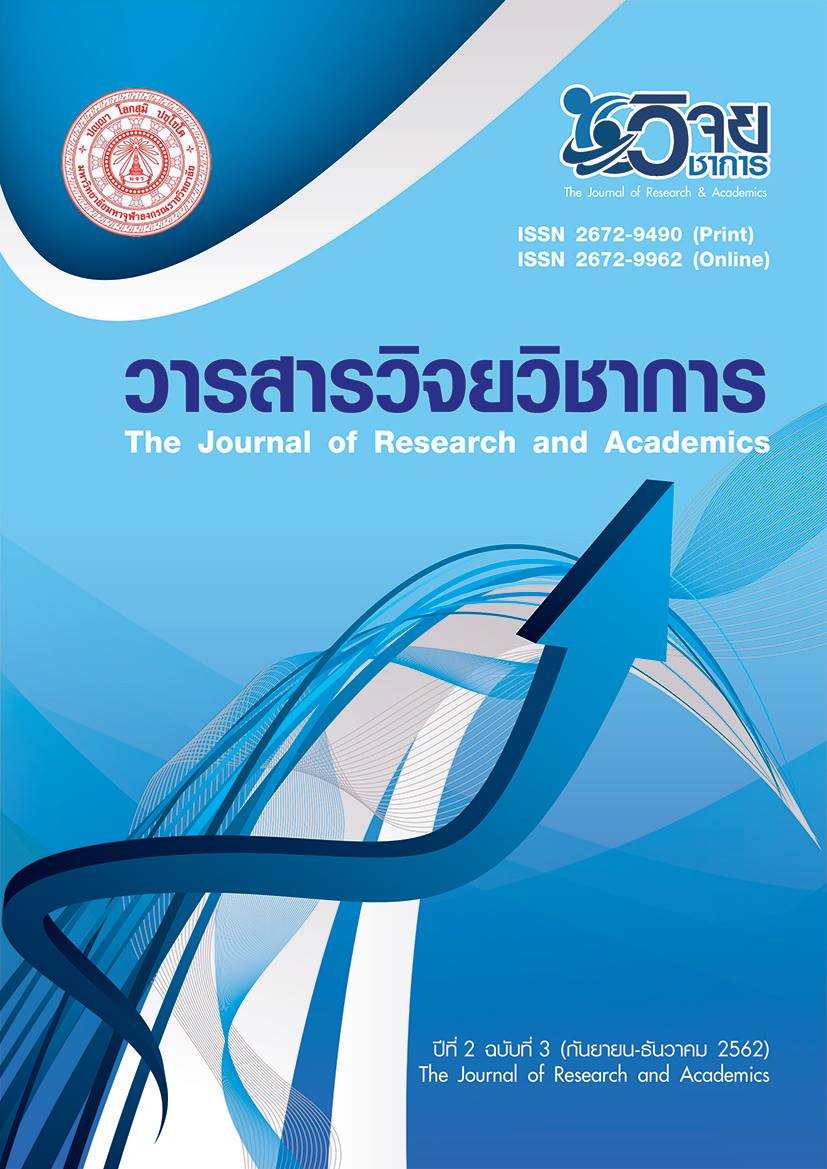Leadership Features Based on Buddhist Principle in Bachelor of Public Administration, Police Administration Commander Students at Suansunandha Rajabhat University
Main Article Content
Abstract
The research of “Leadership features based on Buddhist Principle in Bachelor of Public Administration, Police Administration commander students at Suansunandha Rajabhat University” with the objective of 1) to study the level of Leadership features based on Buddhist Principle in Bachelor of Public Administration, Police Administration commander students at Suansunandha Rajabhat University. 2) study factors that are related to Leadership features based on Buddhist Principle in Bachelor of Public Administration, Police Administration commander students at Suansunandha Rajabhat University. The researcher used the questionnaire with 100 the Bachelor of Public Administration, Police Administration commander students at Suansunandha Rajabhat University by finding the frequency and percentage, finding the mean and standard deviation, Analyzed by t-test and Pearson's Product Moment Correlation Coefficient.
The results of this study were
- the level of Leadership features based on Buddhist Principle in Bachelor of Public Administration, Police Administration commander students at Suansunandha Rajabhat University. Most of them was in a high level and the overall received value was in a high level. (
= 3.83, S.D. = 0.47) When considering each aspect, it was found that the aspect with the highest average value of the top 3 at a high level was Justice. (
= 4.01, S.D. = 0.67) The second was the Lovable at a high level (
= 3.99, S.D. = 0.67) The third was a Patient Listener at a high level. (
= 3.94, S.D. = 0.62)
- Factors that are related to Leadership features based on Buddhist Principle in Bachelor of Public Administration, Police Administration commander students at Suansunandha Rajabhat University. When considering the relationship between the qualities of good friends variables and the leadership characteristics found that all of them had a statistical significance and a positive relationship. (p<.01) It indicated that the relationships of all variables were in the same direction. The variable that had the highest relationship were Respectable and Not Leading or Spurring on to a Useless End. There was a relatively high relationship size. (r = .724) It indicated that students became more respectful, they will become less persuade.
Article Details
1. เนื้อหาและข้อมูลในบทความที่ลงพิมพ์กับวารสารวิจยวิชาการ ถือเป็นข้อคิดเห็น และความรับผิดชอบของผู้เขียนบทความโดยตรงซึ่งกองบรรณาธิการวารสารไม่จำเป็นต้องเห็นด้วย หรือร่วมรับผิดชอบใด ๆ
2. บทความ ข้อมูล เนื้อหา รูปภาพ ฯลฯ ที่ได้รับการตีพิมพ์ในวารสารวิจยวิชาการ ถือเป็นลิขสิทธิ์ของวารสารวิจยวิชาการ หากบุคคลหรือหน่วยงานใดต้องการนำทั้งหมดหรือส่วนหนึ่ง ส่วนใดไปเผยแพร่ต่อหรือเพื่อการกระทำการใด ๆ จะต้องได้รับอนุญาตเป็นลายลักษณ์อักษรจากวารสารวิจยวิชาการก่อนเท่านั้น
References
2. พระธรรมปิฎก (ป.อ.ปยุตโต). (2542). ผู้นำ. กรุงเทพฯ: พิฆเณศพริ้งเซ็นเตอร์.
3. พระธรรมปิฎก (ป.อ.ปยุตโต). (2544). การพัฒนาที่ยั่งยืน. (พิมพ์ครั้งที่ 6). กรุงเทพฯ: เรือนแก้ว.
4. ภาระดี มหาขันธ์. (2532). พื้นฐานอารยธรรมไทย. กรุงเทพฯ: โอเดียนสโตร์.
5. มหาวิทยาลัยมหาจุฬาลงกรณราชวิทยาลัย. (2539). พระไตรปิฎกภาษาไทย ฉบับมหาจุฬาลงกรณราชวิทยาลัย. กรุงเทพฯ: โรงพิมพ์มหาจุฬาลงกรณราชวิทยาลัย.
6. สุภัททา ปิณฑะแพทย์. (2562). ภาวะผู้นำของนักบริหารการศึกษามืออาชีพ. เข้าถึงได้จาก http://www.supatta.haysamy.com/leader_pro.html.

